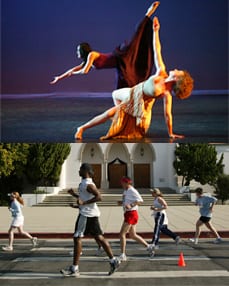
Many college students may think they don’t have to worry about osteoporosis until they’re in their 60’s or older. But that’s a mistake, according to Junior Zakkoyya Lewis, an athletic training major at Loyola Marymount University. Her latest student research project suggests that young people should do what they can now to maximize their bone mineral density.
“What you do before age 25 sets you up for the rest of your life,” Lewis said. “If someone doesn’t have high bone density earlier on in life, they will be at a much higher risk for osteoporosis in the future. This is particularly true for women.”
Lewis’s research evaluated the influence of energy availability, which is calorie consumption minus calories expended through activity, on bone mineral density in college-age runners, dancers and a group of normally-active students. Under the guidance of Hawley Almstedt, associate professor of health and human sciences, she measured her subjects’ bone mineral density at several sites on their bodies, then measured their daily dietary intake and energy expenditure over four days.
Her hypothesis was that higher energy availability in the subject pool would correlate to higher bone mineral density and overall bone health. After examining the data, she found that there were no significant relationships. However, the data did reveal that dancers had more bone mineral density than others, particularly in the hip and spine.
“Our research shows that despite the low energy availability, dancers have healthy bone mineral density,” Lewis said. “This implies that the loading nature of dancing has a greater positive influence on bone health than energy availability and running.”
Lewis conducted the research using the equipment and state-of-the-art diagnostic tools in LMU’s new Human Performance Lab. She primarily used a scanner to take DXA scans – dual-energy X-ray absorptiometry – which are used to evaluate bone mineral density.
“I got a chance to tie all the pieces together as a student,” Lewis said. “I participated in the research process, did the testing and analyzed the data. It gave me a more in-depth and hands-on understanding of the subject material.”
Lewis’ research was presented at the fourth annual Undergraduate Research Symposium in the Spring, and later at a professional conference in May. In addition, she was awarded a Summer Undergraduate Research Fellowship at LMU to continue examining bone mineral density.



